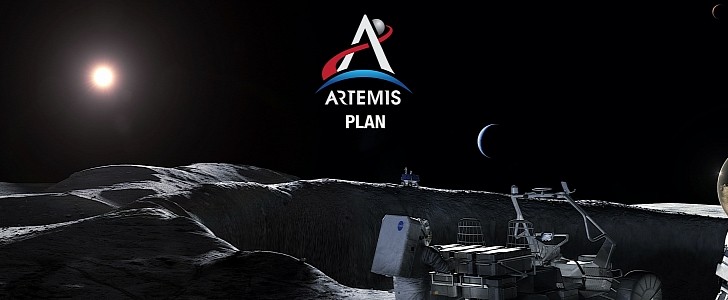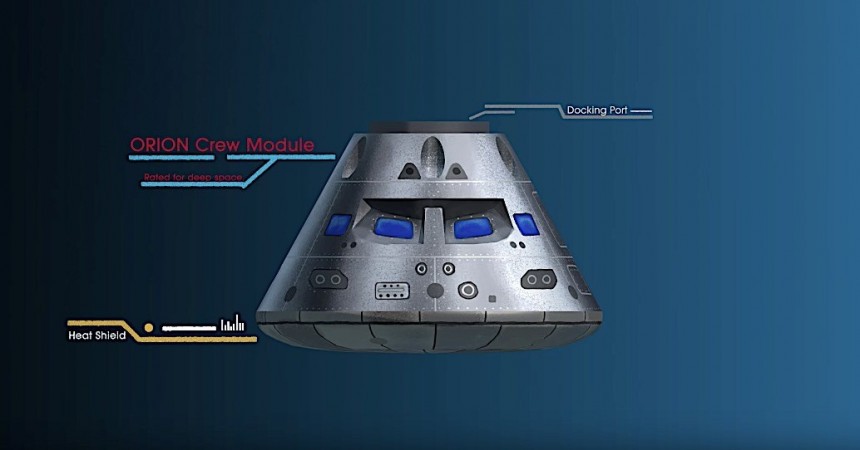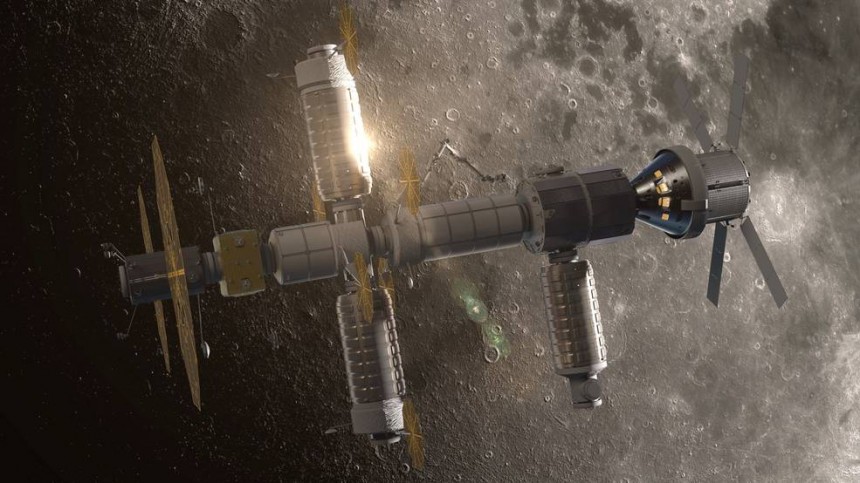Even if it doesn’t show, NASA is engaged in perhaps the most ambitious program in its history. Called Artemis, the plan is not only to have people back on the Moon by the middle of the decade, but also use the Earth satellite as a staging area for future missions to Mars.
It’s been a while since NASA updated the program’s status. It’s over a year and a half since Artemis was officially launched, so we were in need of some fresh news. Thankfully, the American space agency delivered, and now we know about a bit more about the program than before.
First off, the way to get there. To get people to the Moon NASA will be using the Space Launch System (SLS) for a rocket, and the Orion capsule for a spacecraft. Orion is already complete, and awaits to be paired with the SLS once the rocket clears the hot fire test later this fall, in October.
Then, the missions. There are for now just 4 planned for the immediate future. Artemis I will launch for the Moon in 2021 with no crew, to test performance, life support, and communication capabilities. Two years later, in 2023, another dry run (that means there will be no landing on the Moon), this time with astronauts on board, will be launched – this is called Artemis II.
During this second mission, NASA will attempt a series of tests, including a so-called proximity operations demonstration. This will require astronauts to manually pilot Orion to assess the spacecraft’s handling qualities and related hardware and software. Rendezvous, proximity operations, docking, and undocking, all will be tested during this mission.
It is Artemis III that will actually put human boots back on the Moon. Scheduled for 2024, the mission would see men and women touching down on the Moon’s South Pole, opening a new chapter in the history of space exploration.
NASA has not actually made up its mind on how this is going to go. As you already know by now, there are plans to build a space station to circle the Moon, called Gateway. The agency is trying to decide on whether Artemis III should dock with the station and then head down to the surface, or go for a direct landing, bypassing it.
As a side note, assembly on this lunar station won't start before 2023, when the power/propulsion element and the habitation/logistics outpost will launch for Lunar orbit, so it might not be ready in time for the Artemis III arrival.
Artemis IV, on the other hand, and all the subsequent missions, still unscheduled, will make full use of the Gateway capabilities. NASA’s plan is to have Orion dock with the station, unload two astronauts there, and take another two down to the surface.
Separately from the main Artemis program, NASA is also working with private partners to send an army of robotic missions to the Moon in preparation for human arrival. Starting 2021, two such missions are planned each year, carrying dozens of new science investigations and technology demonstrations.
The ultimate goal is, of course, to have a permanent presence on the surface of the Moon. Called Artemis Base Camp, the outpost would comprise according to NASA new rovers, power systems, habitats, and more for long-term exploration of the Moon. An actual timeline for the Base Camp was not provided.
“With bipartisan support from Congress, our 21st century push to the Moon is well within America’s reach,” said NASA Administrator Jim Bridenstine in a statement released last week.
“As we’ve solidified more of our exploration plans in recent months, we’ve continued to refine our budget and architecture. We’re going back to the Moon for scientific discovery, economic benefits, and inspiration for a new a generation of explorers. As we build up a sustainable presence, we’re also building momentum toward those first human steps on the Red Planet.”
First off, the way to get there. To get people to the Moon NASA will be using the Space Launch System (SLS) for a rocket, and the Orion capsule for a spacecraft. Orion is already complete, and awaits to be paired with the SLS once the rocket clears the hot fire test later this fall, in October.
Then, the missions. There are for now just 4 planned for the immediate future. Artemis I will launch for the Moon in 2021 with no crew, to test performance, life support, and communication capabilities. Two years later, in 2023, another dry run (that means there will be no landing on the Moon), this time with astronauts on board, will be launched – this is called Artemis II.
It is Artemis III that will actually put human boots back on the Moon. Scheduled for 2024, the mission would see men and women touching down on the Moon’s South Pole, opening a new chapter in the history of space exploration.
NASA has not actually made up its mind on how this is going to go. As you already know by now, there are plans to build a space station to circle the Moon, called Gateway. The agency is trying to decide on whether Artemis III should dock with the station and then head down to the surface, or go for a direct landing, bypassing it.
As a side note, assembly on this lunar station won't start before 2023, when the power/propulsion element and the habitation/logistics outpost will launch for Lunar orbit, so it might not be ready in time for the Artemis III arrival.
Separately from the main Artemis program, NASA is also working with private partners to send an army of robotic missions to the Moon in preparation for human arrival. Starting 2021, two such missions are planned each year, carrying dozens of new science investigations and technology demonstrations.
The ultimate goal is, of course, to have a permanent presence on the surface of the Moon. Called Artemis Base Camp, the outpost would comprise according to NASA new rovers, power systems, habitats, and more for long-term exploration of the Moon. An actual timeline for the Base Camp was not provided.
“With bipartisan support from Congress, our 21st century push to the Moon is well within America’s reach,” said NASA Administrator Jim Bridenstine in a statement released last week.
“As we’ve solidified more of our exploration plans in recent months, we’ve continued to refine our budget and architecture. We’re going back to the Moon for scientific discovery, economic benefits, and inspiration for a new a generation of explorers. As we build up a sustainable presence, we’re also building momentum toward those first human steps on the Red Planet.”



























